10 Amazing Winter Hikes In Colorado's Front Range
Hit the trail this winter.

Winter is a great time to hike a trail along the Front Range in Colorado. While the mountains stay socked in with snow, it’s not unusual to have 60 degree days in Denver in January or February. But, average high temperatures are in the 40s, so layer up and hit the trail along the Front Range. Plus, in winter you can even have the trail to yourself or share with just a few, compared to fighting the crowds in summer.
For winter hikes, here’s my criteria:
- Accessible in winter
- Can be done in 2-3 hours or less
- Less than 1.5 hour drive from Denver
- High on the scenic and/or wildlife scale
Check out my list and start making your plans for this weekend!
1. Hike Saint Mary's Glacier, Clear Creek County
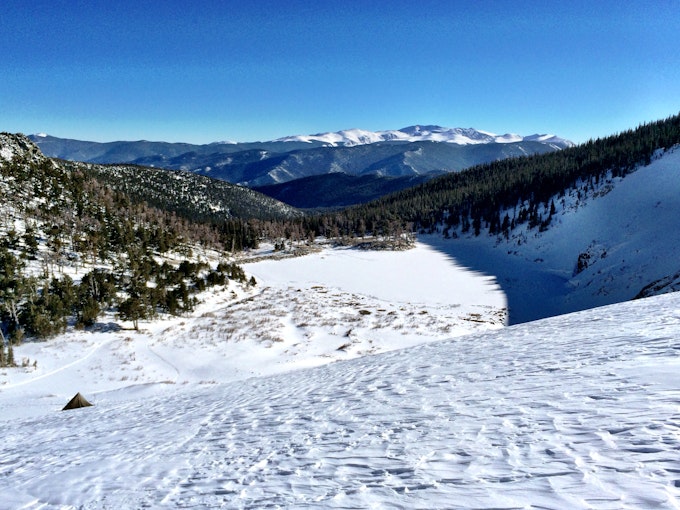
Photo: Jennifer Broome
Saint Mary’s Glacier is one of the top destinations in Clear Creek County. It is about an hour’s drive from Denver. Technically, the glacier is a large perennial snowfield, which means it is there year round. In winter, trekking poles are a great idea. You can do the trail with just traction devices, but snowshoes or even cross country or telemark skis are better. This is a popular winter hike and is especially fantastic on a bluebird sky day with light winds. Learn more.
2. Hike the Devil’s Backbone, Loveland
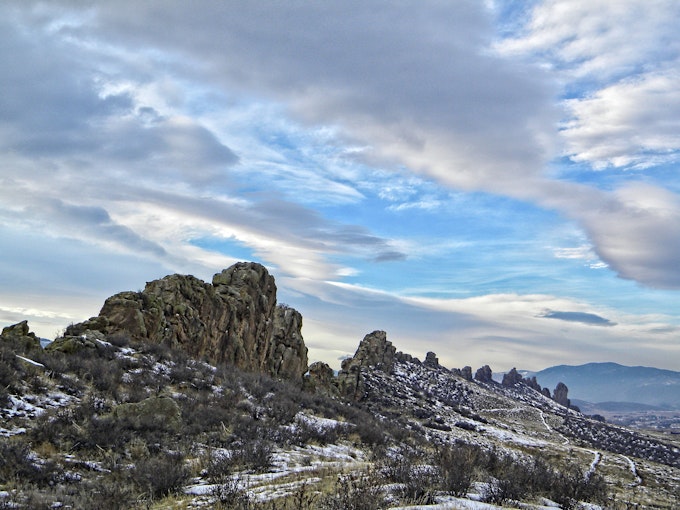
Photo: Matt Willey
Devil’s Backbone Open Space in Loveland is very popular because the trails are easy to moderate. There are 12 miles of trails that connect to Rimrock Open Space and Horsetooth Mountain Open Space so it is easy to add mileage. Red-tailed hawks are often seen soaring above Devil’s Backbone, one of the most impressive and visible geologic landmarks in Northern Colorado. Learn more.
3. Hike Mount Sanitas, Boulder
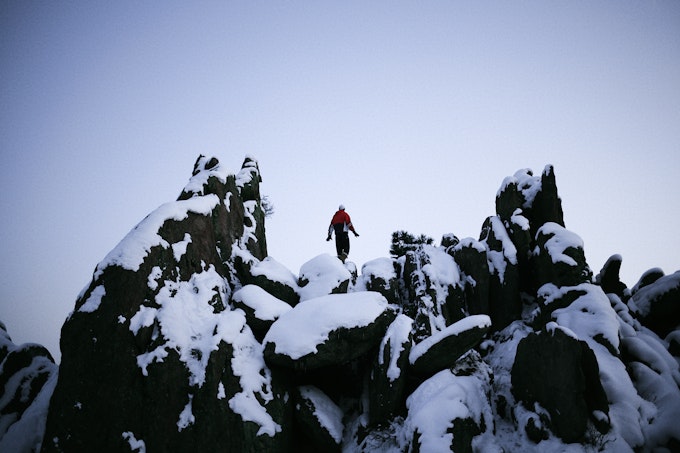
Photo: Brock DeHaven
Mount Sanitas is very popular with locals in Boulder. It is a 3.1 mile loop that starts at 5,520' in Sunshine Canyon and tops out at 6,863'. Total roundtrip elevation gain is 1,357'. From the top, you get spectacular views of the Indian Peaks Wilderness Area to the west, Boulder to the east, and Flatirons to the south. "Sanitas" means "health" in Latin. It was named after the Boulder sanitarium at its base, which is now the Mapleton Medical Center. Learn more.
4. Hike the Green Mountain Trail, Lakewood

Photo: Chris Tomer
William F. Hayden Park on Green Mountain has a challenging network of multi-use trails. Because the mountain is one of the first to rise out of the plains, you get unique views of where the mountains meet the prairie and fascinating geology. The summit, at 6,857' offers stunning views of Denver and the plains to the east and impressive mountain peaks to the west. Once home to buffalo, the park now has a diverse wildlife population including coyotes, hawks, rattlesnakes, bluebirds, rabbits, mule deer, and occasionally a mountain lion. Because of the lack of trees, this is a sunny hike, which is great in winter. Don't forget your sunscreen! Learn more.
5. Hiking and Wildlife in Waterton Canyon, Littleton

Photo: Ryan Mckinney
If you’re looking for a good chance to catch some Colorado wildlife, waterton canyon is a great option. It’s close to the city, has great hiking trails, and the bighorn sheep that roam the area provide endless entertainment, especially if you can head up their during the rut (November-December) when the loud crack of rams butting heads can be heard and if you’re lucky, you can see the action. Also look for wild turkeys! Be sure to leave your dog at home, they are not allowed due to the wildlife. Learn more.
6. Hike Morrison Slide in Matthews-Winters Park, Morrison

Photo: Johnathan Valdez
Matthews-Winters Park is a scenic and popular park with trails for hiking, biking, and horseback riding and is filled with red rock formations that make for amazing scenery. From the top of Morrison Slide, you get great views of Red Rocks, the Hogback, Denver, and eastern plains. Take the challenging descent on the other side of Morrison Slide to reach the Red Rocks Trail. There is very little shade on this hike, so don't forget the sunscreen, sunglasses, and hat. If you want more mileage, you can add in Dakota Ridge Trail for a great 6-mile loop. Learn more.
7. Explore Red Rocks Park in Winter, Morrison
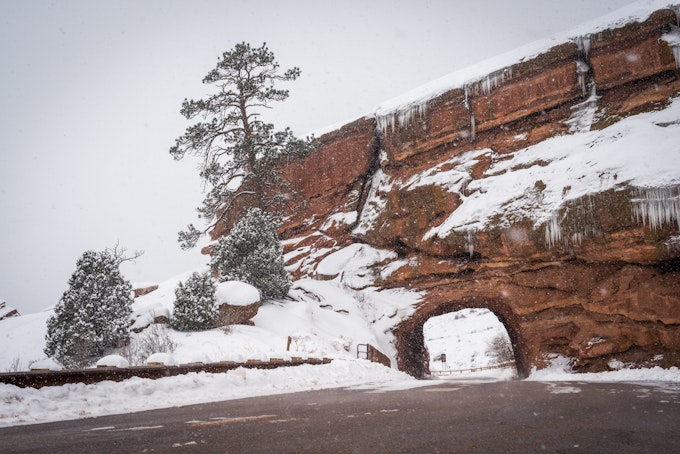
Photo: Jason Hatfield
The fitness scene here rocks....literally. The heart pumping, breath stealing workout of running the stairs at Red Rocks Amphitheater is popular year round. Known as one of the best places in the world to see a concert, it is also a world class workout venue. It is a haven for fitness junkies and athletes to push physical limits at altitude. Learn more.
8. Run the Famous Manitou Incline, Manitou Springs
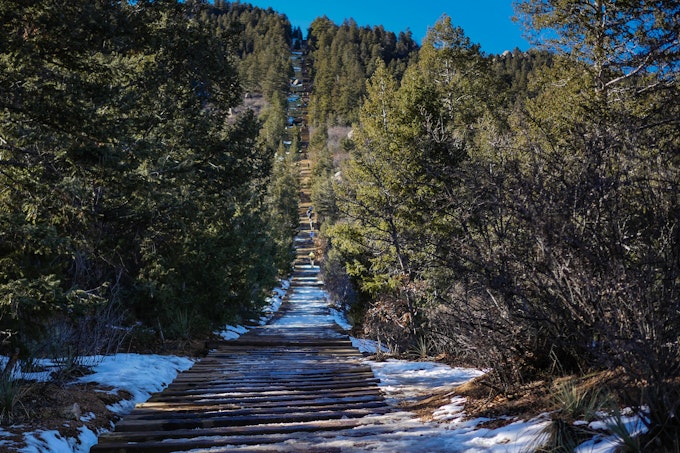
Photo: Brian Lewis
The Incline in Manitou Springs can easily be called the holy grail of cardio in Colorado. It’s one mile up…straight up, and it’s straight up stairs. The heart pounding intense workout starts at 6,530' and is a 2,000' vertical elevation gain in a mile. Think of it as an endless stairway to heaven that’s a hell of a workout. Learn more.
9. Hike to Horsetooth Rock, Fort Collins
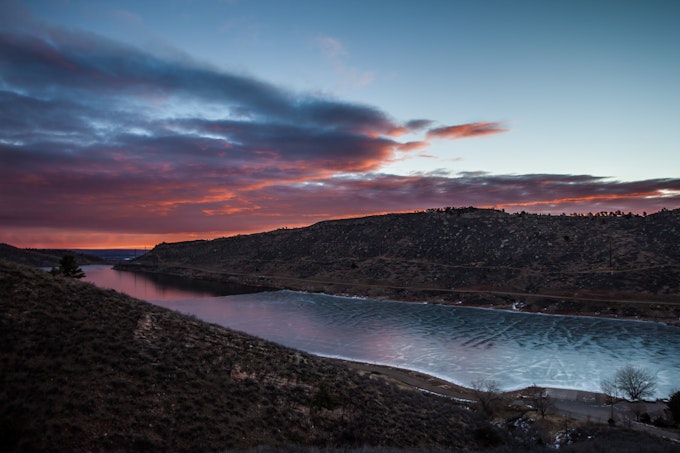
Photo: Ryan Mckinney
Horsetooth Rock is a unique geological feature that is a landmark in Fort Collins. There are 29 miles of multi-use trails for hiking, biking, and horseback riding in Horsetooth Mountain Open Space. The hike to the top of Horsetooth Rock is 5 miles roundtrip. It starts with a gentle incline through open grasslands giving you time to warm up. Then you hit switchbacks, a service road briefly, through the trees for the steepest part, to the rocky base of Horsetooth Rock. In the forest, you may see signs or encounter deer, fox, coyote, skunk, bobcat, or mountain lion. The last bit of the hike is a scramble to reach the top. It is a moderately strenuous hike that rewards you with incredible views of Horsetooth Reservoir, Fort Collins, Hidden Valley, and Longs Peak in Rocky Mountain National Park. Learn more.
10. Hike Royal Arch, Boulder
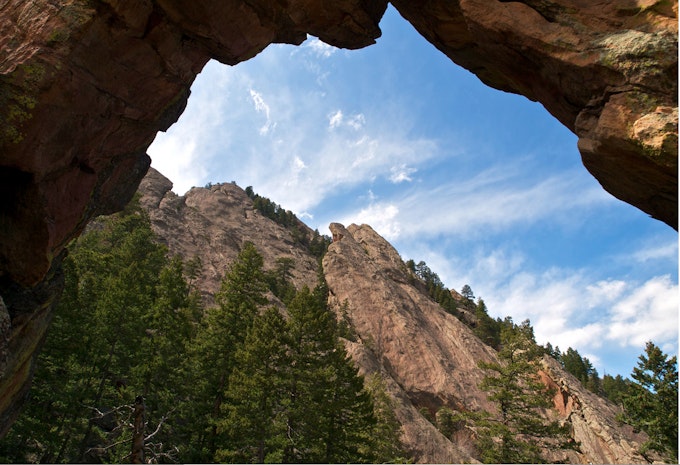
Photo: Brock DeHaven
Royal Arch is the most popular trail in the Flatirons, a mecca for climbers and hikers in Boulder. Perched high up in the Flatirons, the rocks are remnants of the Fountain Formation, a mineral-rich sand that eroded from the ancestral Rocky Mountain uplift 300 million years ago. Sediments deposited by the ebb and flow of inland oceans once covering Colorado, compressed this layer into sandstone that was thrusted upward 45 million years ago by the same tectonic forces that created the modern day Rocky Mountains. The Royal Arch we see today is a fragment of the exposed Fountain Formation sculpted by water, wind, and mechanical erosion. There is a network of trails in Chautauqua Park so it is easy to add additional mileage. Only word of caution is in winter, after big snows, this trail can be very muddy. Learn more.
Cover photo: Brock DeHaven
Don't see your favorite Front Range hike on The Outbound? Show us by creating an adventure.
Please respect the places you find on The Outbound.
Always practice Leave No Trace ethics on your adventures. Be aware of local regulations and don't damage these amazing places for the sake of a photograph. Learn More
We want to acknowledge and thank the past, present, and future generations of all Native Nations and Indigenous Peoples whose ancestral lands we travel, explore, and play on. Always practice Leave No Trace ethics on your adventures and follow local regulations. Please explore responsibly!
Do you love the outdoors?
Yep, us too. That's why we send you the best local adventures, stories, and expert advice, right to your inbox.







